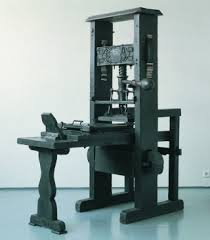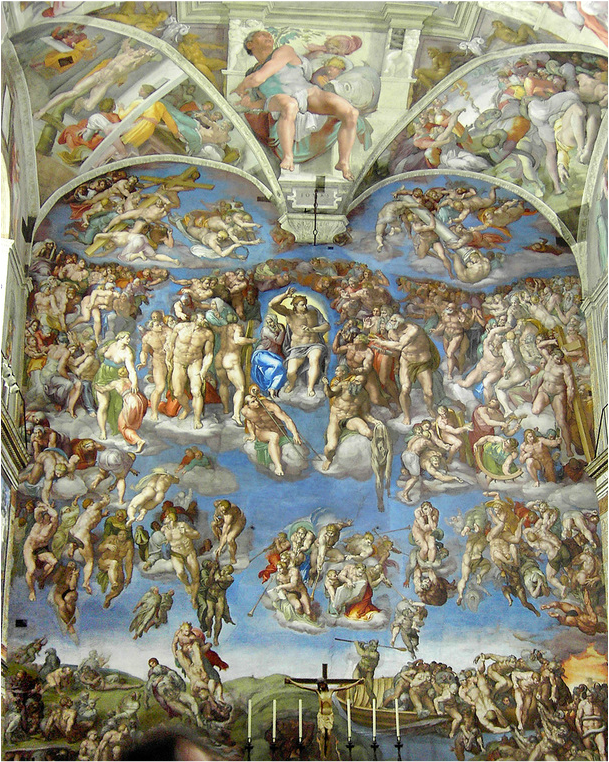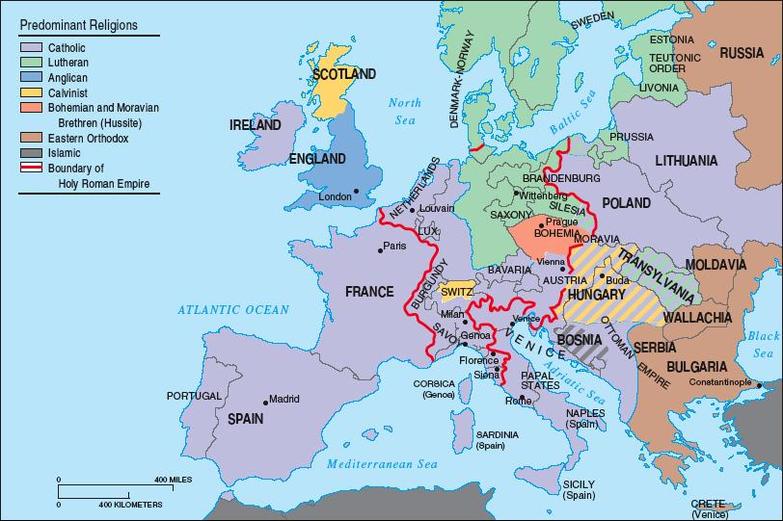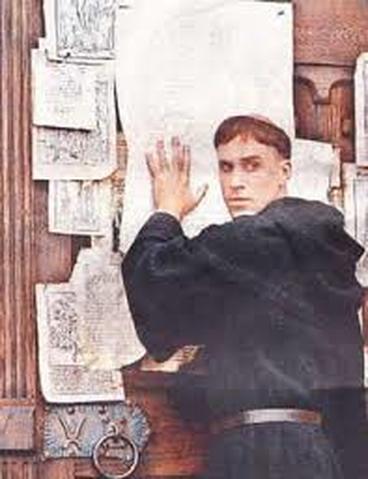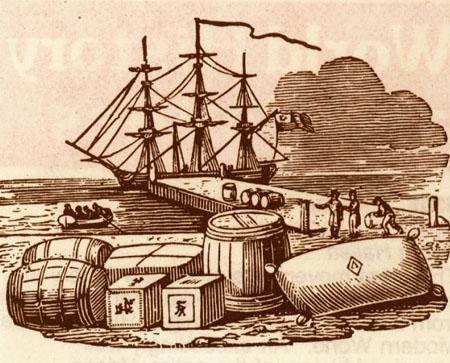PERIOD 1
1450 – 1648
1453 marked the end the 100 Years War between two rival dynasties in France and England who fought for the throne of the largest kingdom in Western Europe. The war saw the development of strong national identities in both countries.
1453 marked the Fall of Constantinople and with it, the end of the Roman Empire, which had lasted for nearly 1,500 years. The Ottoman conquest of Constantinople also dealt a massive blow to Christendom. This date is considered by many to be the official end of the Middle Ages.
THROUGH
1648: Why is this date significant?
1648 marks the end of the Thirty Years’ War in the Holy Roman Empire with the signing of a series of peace treaties called the Peace of Westphalia.
1648 marks the end of the Eighty Years’ War between Spain and the Dutch Republic, with Spain formally recognizing the independence of the Dutch Republic.
What happened in between 1450 and 1648?
There are five major areas of study in Period 1:
1. The Renaissance
2. The Age of Exploration
3. The Reformation and Religious Wars
4. The new monarchies
5. European life between 1450 and 1648.
The worldview of European intellectuals shifts from one based on ecclesiastical and classical authority to one based primarily on inquiry and observation of the natural world.
Renaissance intellectuals and artists revived classical motifs in the fine arts and classical values in literature and education. Intellectuals — later called humanists — employed new methods of textual criticism based on a deep knowledge of Greek and Latin, and revived classical ideas that made human beings the measure of all things. Artists formulated new styles based on ancient models. The humanists remained Christians while promoting ancient philosophical ideas that challenged traditional Christian views. Artists and architects such as Brunelleschi, Leonardo, Michelangelo, and Raphael glorified human potential and the human form in the visual arts, basing their art on classical models while using new techniques of painting and drawing, such as geometric perspective. The invention of the printing press in the mid-15th century accelerated the development and dissemination of these new attitudes, notably in Europe north of the Alps (“The Northern Renaissance”).
During the 16th and 17th centuries, Europeans developed new approaches to and methods for looking at the natural world in what historians have called the Scientific Revolution. Aristotle’s classical cosmology and Ptolemy’s astronomical system came under increasing scrutiny from natural philosophers (later called scientists) such as Copernicus, Galileo, and Newton. The philosophers Bacon and Descartes articulated comprehensive theories of inductive and deductive reasoning to give the emerging scientific method a sound foundation. Bacon urged the collection and analysis of data about the world and spurred the development of an international community of natural philosophers dedicated to the vast enterprise of what came to be called natural science. In medicine, the new approach to knowledge led physicians such as Harvey to undertake observations that produced new explanations of anatomy and physiology, and to challenge the traditional theory of health and disease (the four humors) espoused by Galen in the second century. The articulation of natural laws, often expressed mathematically, became the goal of science.
The unexpected encounter with the western hemisphere at the end of the 15th century further undermined knowledge derived from classical and biblical authorities. The explorations produced new knowledge of geography and the world’s peoples through direct observation, and this seemed to give credence to new approaches to knowledge more generally. Yet while they developed inquiry-based epistemologies, Europeans also continued to use traditional explanations of the natural world based on witchcraft, magic, alchemy, and astrology.
_____________________________________________________________________________________________________________________________________
I. A revival of classical texts led to new methods of scholarship and new values in both society and religion.
A. Italian Renaissance humanists promoted a revival in classical literature and created new philosophical approaches to ancient texts. Some Renaissance humanists furthered the values of secularism and individualism.
* Petrarch, Lorenzo Valla, Marsilio Ficino, Pico della Mirandola
Watch Video 1 : The Italian Renaissance
Watch Video 2 : The Northern Renaissance
Complete Primary Document 1.1 reading and answers – The Ascent of Mount Ventoux, A Letter from Petrarch to Dionisio da Borgo San Sepolcro
Complete Primary Document 1.2 reading and answers – A Letter from Petrarch to Marcus Tullius Cicero
Complete Primary Document 1.3 reading and answers – from Giovanni Pico della Mirandola, Oration on the Dignity of Man (1486)
Complete Primary Document 1.5 reading and answers – From Baldassare Castiglione, The Book of the Courtier (1513)
B. Humanist revival of Greek and Roman texts, spread by the printing press, challenged the institutional power of universities and the Roman Catholic Church and shifted the focus of education away from theology toward the study of the classical texts.
* Leonardo Bruni, Leon Battista Alberti, Niccolo Machiavelli
C. Admiration for Greek and Roman political institutions supported a revival of civic humanists culture in the Italian city-states and produced secular models for individual and political behavior.
* Niccolo Machiavelli, Jean Bodin, Baldassare Castiglione, Francesco Guicciardini
Watch Video 3: Machiavelli: The Prince
Complete Primary Document 1.4 reading and answers – From Niccolo Machiavelli, The Prince (1513)
____________________________________________________________________________________________________________________________________
II. The invention of printing promoted the dissemination of new ideas.
A. The invention of the printing press in the 1450s aided in the spreading of the Renaissance beyond Italy and encouraged the growth of vernacular literature, which eventually contributed to the development of national cultures.
B. Protestant reformers used the press to disseminate their ideas. Which spurred religious reform and helped it to become widely established.
____________________________________________________________________________________________________________________________________________________________________
III. The visual arts incorporated the new ideas of the Renaissance and were used to promote personal, political, and religious goals.
A. Princes and popes, concerned with enhancing their prestige, commissioned painting and architectural works based on classical styles and often employing the newly invented techniques of geometric perspective.
* Michelangelo, Donatello, Raphael, Andrea Palladio, Leon Battista Alberti, Filio Brunelleschi
B. A human-centered naturalism that considered individuals and everyday life appropriate objects of artistic representation was encouraged through the patronage of both princes and commercial elites.
* Raphael, Leonardo da Vinci, Jan Van Eyck, Pieter Bruegel the Elder,Rembrandt
C. Mannerist and Baroque artists employed distortion, drama, and illusion in works commissioned by monarchies, city-states, and church for public buildings to promote their stature and power.
* El Greco, Artemisia Gentileschi, Gian Bernini, Peter Paul Rubens
Watch Video 4: The Art of the Renaissance
____________________________________________________________________________________________________________________________________
IV. New ideas in science based on observation, experimentation, and mathematics challenged classical views of the cosmos, nature, and the human body, although folk traditions of knowledge and the universe persisted.
A. New ideas and methods in astronomy led individuals such as Copernicus, Galileo, and Newton to question the authority of the ancients and religion and to develop a heliocentric view of the cosmos.
B. Anatomical and medical discoveries by physicians, including William Harvey, presented the body as an integrated system, challenging the traditional humoral theory of the body and of disease espoused by Galen.
* Paracelsus, Andreas Vesalius
C. Francis Bacon and Rene Descartes defined inductive and deductive reasoning and promoted experimentation and use of mathematics, which would ultimately shape the scientific method.
D. Alchemy and astrology continued to appeal to elites and some natural philosophers, in part because they shared with the new science the notion of a predictable and knowable universe. In the oral culture of peasants, a belief that the cosmos was governed by divine and demonic forces persisted.
* Paracelsus, Gerolamo Cardano, Johannes Kepler, Sir Isaac Newton
KEYPOINT 1.2
The struggle for sovereignty within and among states resulted in varying degrees of political centralization.
Three trends shaped early modern political development: (1) from decentralized power and authority toward centralization; (2) from a political elite consisting primarily of a hereditary landed nobility toward one open to men distinguished by their education, skills, and wealth; and (3) from religious toward secular norms of law and justice.
One innovation promoting state centralization and the transformation of the landed nobility was the new dominance of firearms and artillery on the battlefield. The introduction of these new technologies, along with changes in tactics and strategy, amounted to a military revolution that reduced the role of mounted knights and castles, raised the cost of maintaining military power beyond the means of individual lords, and led to professionalization of the military on land and sea under the authority of the sovereign. This military revolution favored rulers who could command the resources required for building increasingly complex fortifications and fielding disciplined infantry and artillery units. Monarchs who could increase taxes and create bureaucracies to collect and spend them on their military outmaneuvered those who could not.
In general, monarchs gained power vis-à-vis the corporate groups and institutions that had thrived during the medieval period, notably the landed nobility and the clergy. Commercial and professional groups, such as merchants, lawyers, and other educated and talented persons, acquired increasing power in the state — often in alliance with the monarchs — alongside or in place of these traditional corporate groups. New legal and political theories, embodied in the codification of law, strengthened state institutions, which increasingly took control of the social and economic order from traditional religious and local bodies. However, these developments were not universal. In eastern and southern Europe, the traditional elites maintained their positions in many polities.
The centralization of power within polities took place within and facilitated a new diplomatic framework among states. Ideals of a universal Christian empire declined along with the power and prestige of the Holy Roman Empire, which was unable to overcome the challenges of political localism and religious pluralism. By the end of the Thirty Years War, a new state system had emerged based on sovereign nation-states and the balance of power.
___________________________________________________________________________________________
I. The new concept of the sovereign states and secular system of law played a central role in the creation of new political institutions.
A. New Monarchies laid the foundation for the centralized modern state by establishing a monarchy on tax collection, military force, and the dispensing of justice, and gaining the right to determine the religion of their subjects.
Ferdinand and Isabella of Spain consolidated control of the military
Star Chamber
Concordat of Bologna (1516)
Peace of Augsburg (1555)
Edict of Nantes
Complete Primary Document 1.7 reading and answers – Obituary of Henry VII, from the Anglica Historia
B. The Peace of Westphalia (1648), which marked the effective and the medieval idea of universal Christendom, accelerating the decline of the Holy Roman Empire by granting princes, bishops, and other local leaders control over religion.
Watcn Video 5: The Thirty Year’s War
C. Across Europe, commercial and professional groups gained in power and played a greater role in political affairs.
Merchants and financiers in Renaissance Italy and Northern Europe
Nobles of the robe in France
Gentry in England
D. Secular political theories, such as those espoused in Machiavelli’s The Prince, provided a new concept of the state.
II. The competitive states system led to new patterns of diplomacy and new forms of warfare.
A. Following the Peace of Westphalia, religion no longer was a cause for warfare among European states; instead, the concept of the balance of power played an important role in structuring diplomatic and military objectives.
B. Advances in military technology (i.e. the military revolution) led to new forms of warfare, including greater reliance on infantry, firearms, mobile cannon, and more elaborate fortifications, all financed by heavier taxation and requiring a larger bureaucracy. Technology, tactics, and strategies tipped the balance of power towards states able to marshal sufficient resources for the new military environment.
Spain under the Habsburgs
Sweden under Gustavus Adolphus
France
III. The competition for power between monarchs and corporate groups produced different distributions of governmental authority in European nations.
A. The English Civil War, a conflict between the monarch, Parliament, and other elites over their respective roles in the political structure, exemplifies this competition.
The Stuarts: OPTIONAL – View
James I
Charles I: OPTIONAL – View: the three sections starting with https://www.youtube.com/watch?v=3NsEgPrvfoo
Oliver Cromwell
B. Monarchies seeking enhanced power faced challenges from nobles who wished to retain traditional forms of shared governance and regional autonomy.
* Louis XIII and Cardinal Richelieu, the Fronde in France, the Catalan revolts in Spain.
KEY CONCEPT 1.3: Religious pluralism challenged the concept of a united EuropeLate medieval reform movements in the Church (including lay piety, mysticism, and Christian humanism) created a momentum that propelled a new generation of 16th-century reformers, such as Erasmus and Martin Luther. After 1517, when Luther posted his 95 Theses attacking ecclesiastical abuses and the doctrines that spawned them, Christianity fragmented, even though religious uniformity remained the ideal. Some states, such as Spain and Portugal, which had recently expelled Muslims and Jews, held fast to this ideal. Others – notably the Netherlands and lands under Ottoman control, which accepted Jewish refugees – did not. In 1517, The Peace of Augsburg (1555) permitted each state of the Holy Roman Empire to be either Catholic or Lutheran at the option of the prince. By the late 16th century, northern European counties were generally Protestant and Mediterranean countries generally Catholic. To re-establish order after a period of religious warfare, France introduced limited toleration of the minority Calvinists within a Catholic kingdom (edict of Nantes, 1598; revoked in 1685). Jews remained a marginalized minority wherever they lived.
Differing conceptions of salvation and the individual’s relationship to the church were at the heart of the conflicts among Luther, subsequent Protestant reformers such as Calvin and the Anabaptists, and the Roman Catholic Church. The Catholic Church affirmed its traditional theology at the Council of Trent (1545-1563), ruling out any reconciliations with the Protestants and inspiriting the resurgence of Catholicism in the 17th century. Religious conflicts inevitably merged with and exacerbated long-standing political tensions between the monarchies and nobility across Europe, dramatically escalating these conflicts as the spread from the Holy Roman Empire to France, the Netherlands, and England. Economic issues such as the power to tax and control ecclesiastical resources further heightened these classes. All three motivations – religious, political, and economic – contributed to the brutal and destructive Thirty Years’ War, which was ended by the Peace of Westphalia (1648). The treaty established a new balance of power with a weakened Holy Roman Empire. The Peace of Westphalia also added Calvinism to Catholicism and Lutheranism as an accepted religion in the Holy Roman Empire, ensuring the permanence of European religious pluralism. However, pluralism did not mean religious freedom; the prince or ruler still controlled the religion of the state, and few were tolerant of dissenters.
Watch Video 6: Introduction to the Reformation
I. The Protestant and Catholic Reformations fundamentally changed theology, religious institutions, and culture.
A. Christian humanism, embodied in the writing of Erasmus, employed Renaissance learning in the service of religious reform. * Sir Thomas More, Juan Luis Vives
Complete Primary Document 1.6 reading and answers – From Desiderius Erasmus, The Praise of Folly (1509)
Complete Primary Document 1.9 reading and answers –From Thomas More, Utopia (Book I) (1516)
Complete Primary Document 1.10 reading and answers –From Thomas More, Utopia (Book II) (1516)
B. Reformers Martin Luther and John Calvin, as well as religious radicals such as the Anabaptists, criticized Catholic abuses and established new interpretations of Christian doctrine and practice.
* Indulgences, Nepotism, Simony, Pluralism and absenteeism
Watch Video 7: Martin Luther
Watch Video 8: Martin Luther’s Theology
Watch Video 9: John Calvin
C. The Catholic Reformation, exemplified by the Jesuit Order and the Council of Trent, revived the church but cemented the division within Christianity.
* St. Teresa of Avila, Ursulines, Roman Inquisition, Index of Prohibited Books
Watch Video 10: The Catholic Reformation/The Counter Reformation
II. Religious reform both increased state control of religious institutions and provided justifications for challenging state authority.
A. Monarchs and princes, such as the English rulers Henry VIII and Elizabeth I, initiated religious reform from the top down (magisterial) in an effort to exercise greater control over religious life and morality.
* State actions to control religion and morality: Spanish Inquisition, Concordat of Bologna (1516), Book of Common Prayer, Peace and Augsburg
Watch Video 11: The English Reformation
Watch Video 12: The English Reformation
B. Some Protestants, including Calvin and the Anabaptists, refused to recognize the subordination of the church to the state.
C. Religious conflicts because a basis for challenging the monarchs’ control of religious instructions.
* Religious conflicts caused by groups challenging the monarch’s control of religious institutions such as the following: Huguenots, Puritans, Nobles in Poland
III. Conflicts among religious group overlapped with political and economic competition within and among states.
A. Issues of religious reform exacerbated conflicts between the monarchy and the nobility, as in the French Wars of Religion.
* Key factors in the French Wars of Religion: Catherine de Medici, St. Bartholomew’s Day Massacre, War of the Three Henry’s, Henry IV
Watch Video 13: The French Wars of Religion
B. The efforts of Habsburg rulers failed to restore Catholic unity across Europe.
* Habsburg rulers: Charles I/V, Philip II, Philip III, Philip IV
C. States exploited religious conflicts to promote political and economic interests.
* States exploitation of religious conflicts: Catholic Spain and Protestant England
* France, Sweden, and Denmark to the Thirty Years’ War
D. A few states, such as France with the Edict of Nantes, allowed religious pluralism in order to maintain domestic peace.
* States allowing religious pluralism: Poland, the Netherlands
KEY CONCEPT 1.4Europeans explored end settled overseas territories, encountering and interacting with indigenous populations. From the 15th through the 17th centuries, Europeans used their mastery of the seas to extend their power in Africa, Asia, and the Americas. In the 15th century, the Portuguese sought direct access by sea to the sources of African gold, ivory, and slaves. At the same time, the rise of Ottoman power in the eastern Mediterranean led to Ottoman control of the Mediterranean trade routes and increased the motivation of Iberians and then northern Europeans to explore possible sea routes to the East. The success and consequences of these explorations, and the maritime expansion that followed them, rested in European adaptation of Muslim and Chinese navigational technology as well as advances in military technology and cartography. Political, economic, and religious rivalries among European also stimulated maritime expansion. By the 17th century, Europeans had forged a global trade network that gradually edged out earlier Muslim and Chinese dominion in the Indian Ocean and the western Pacific.
In Europe, these successes shifted economic power within Europe from the Mediterranean to the Atlantic states. In Asia, the Portuguese, Spanish, and Dutch competed for control of trade routes and trading stations. In the Americas, the Spanish and Portuguese led in the establishment of colonies, followed by the Dutch, French, and English. The pursuit of colonies was sustained by mercantilist economic policies. The creation of maritime empires was also animated by the religious fervor sweeping Europe during the period of the Reformations (Catholic and Protestant). Global European expansion led toteh conversion of indigenous populations in South and Central America, to an excnage of commodities and crops that enriched European and other civilizations that became part of the global trading network, and, eventually, to migrations that had profound effects on Europe. The expansion also challenged parochial worldviews in Christian Europe. Yet the Colombian Exchange also unleashed several ecological disasters = notably the death of vast numbers of the Americas’ population in epidemics of European diseases, such as smallpox and measles, against which the native populations had no defenses. The establishment of the plantation system in the American colonies also led to the vast expansion of the African slave trade, one feature of the new Atlantic trading system.
Watch Video 14: The Age of Exploration and Discovery
I. European nations were driven by commercial and religious motives to explore overseas territories and establish colonies.
A. European states sought direct access to gold and spices and luxury goods as a means to enhance personal wealth and state power.
B. The rise of mercantilism gave the state a new role in promoting commercial development and the acquisition of colonies overseas.
Watch Video 15: Mercantilism
C. Christianity served as a stimulus for exploration as governments and religious authorities sought to spread the faith and counter Islam, and as the justification for the physical and cultural subjugation of indigenous civilizations.
II. Advances in navigations, cartography, and military technology allowed Europeans to establish overseas colonies and empires.
Navigational technology: compass, stern-post rudder, Portolani, quadrant and astrolabe, Lateen rig
Military technology: horses, guns and gunpowder
III. Europeans established overseas empires and trade networks through coercion and negotiation.
A. The Portuguese established a commercial network along the African coast, in South and East Asia, and in South America.
B. The Spanish established colonies across the Americas, the Caribbean, and the Pacific, which made Spain a dominant state in Europe.
Complete Primary Document 1.8 reading and answers – A Letter from Columbus to the King and Queen of Spain (1494?)
C. The Atlantic nations of France, England, and the Netherlands followed by establishing their own colonies and trading networks to compete with Portuguese and Spanish dominance.
D. The competition for trade led to conflicts and rivalries among European powers.
IV. European colonial expansion led to a global exchange of goods, flora, fauna, cultural practices, and diseases, resulting in the destruction of some indigenous civilizations, a shift toward European dominance, and the expansion of the slave trade.
A. The exchange of goods shifted the center of economic power in Europe from the Mediterranean to the Atlantic states and brought the latter into an expanding world economy.
B. The exchange of new plants, animals, and diseases – the Columbian Exchange – created economic opportunities for European and facilitated European subjugation and destruction of indigenous peoples, particularly in the Americas.
* New plants, animals, and diseases:
From Europe to the Americas – wheat, cattle, horses, pigs, sheep, smallpox, measles
From America to Europe – tomatoes, potatoes, squash, corn, tobacco, turkeys, syphilis
Watch Video 16: The Columbian Exchange
C. Europeans expanded the African slave trade in response to the establishment of a plantation economy in the Americas and demographic catastrophes among indigenous peoples.
KEY CONCEPT 1.5European society and the experiences of everyday life were increasingly shaped by commercial and agricultural capitalism, notwithstanding the persistence of medieval social and economic structures. In the 16th and 17th centuries, Europeans experienced profoundeconomic and social changes. The influx of precious metals from the Americas and the gradual recovery of Europe’s population from the Black Death caused a significant rise in the cost of goods and services by the late 16th century, known as the price revolution. The new pattern of economic enterprise and investment that arose from these changes would come to be called capitalism. Family-based banking houses were supplanted by broadly integrated capital markets in Genoa, then in Amsterdam, and later in London. These and other urban centers became increasingly active consumer markets for a variety of luxury goods and commodities. Rulers soon recognized that capitalist enterprises offered them a revenue source to support state functions, and the competition among states was extended into the economic arena. The drive for economic profit and the increasing scale of commerce stimulated the creation of joint-stock companies to conduct overseas trade and colonization.
Many Europeans found their daily lives altered by these demographic and economic changes. As population increased in the 16th century, the price of grain rose and diets deteriorated. All but the wealthy were vulnerable to food shortages, and even the wealthy had no immunity to recurrent legal epidemics. Although hierarchy and privilege continued to define the social structure, the nobility and gentry expanded with the infusion of new blood from the commercial and professional classes. By the mid-17th century, war, economic contraction, and slacking population growth contributed to the disintegration of older communal values. Growing numbers of the poor became beggars or vagabonds, straining the traditional systems of charity and social control. In eastern Europe, commercial development lagged and traditional social patterns persisted; the nobility actually increased its power over the peasantry.
Traditional town governments, dominated by craft guilds and traditional religious institutions, staggered under the burden of rural migrants and growing poverty. The Reformation and Counter-Reformation stimulated a drive to regulate public morals, leisure activities, and the distribution of poor relief. In both town and country, the family remained the dominant unit of production, and marriage remained an instrument of families’ social and economic strategies. The children of peasants and craft workers often labored alongside their parents. In the lower orders of society, men and women did not occupy separate spheres, although they performed different tasks. Economics often dictated later marriages (European marriage pattern). However, there were exceptions to this pattern: In the cities of the Renaissance Italy, men in their early 30s often married teen-aged women, and in eastern Europe, early marriage for both men and women persisted. Despite the growth of the market economy in which individuals increasingly made their own way, leisure activities tended to be communal, rather than individualistic, and consumerist, as they are today. Local communities enforced their customs and norms through crowd action and rituals of public shaming.
I. Economic change produced new social patterns, while traditions of hierarchy and status persisted.
A. Innovations in banking and finance promoted the growth of urban financial centers and a money economy.
* Innovations in banking and finance promoted the growth of urban financial centers and a money economy: double entry book-keeping, Bank of Amsterdam, The Dutch East India Company, the British East India Company.
B. The growth of commerce produced a new economic elite, which related to traditional elites in different ways in Europe’s various geographic regions.
* The new economic elites: gentry in England, nobles of the robe in France, Town elites (bankers and merchants), Caballeros and hidalgos in Spain.
C. Hierarchy and status continued to define social power and perceptions in rural and urban settings.
III. Most Europeans derived their livelihood from agriculture and oriented their lives around the seasons, the village or the manor, although economic changes began to alter rural production and power.
A Subsistence agriculture was the rule in most areas, with three-crop field rotation, in the north and two-crop rotation in the Mediterranean; in many cases, farmers paid rent and labor services for their land.
B. The price revolution contributed to the accumulation of capital and the expansion of the market economy through the commercialization of agriculture, which benefited large landowners in western Europe.
* the commercialization of agriculture: enclosure movement, restricted use of the village common, free-hold tenure.
C. As western Europe moved toward a free peasantry and commercial agriculture serfdom was codified in the east, where nobles continued to dominate economic life on large estates.
D. The attempts of landlords to increase their revenues by restricting or abolishing the traditional rights of peasants led to revolt.
III. Population shifts and growing commerce caused the expansion of cities, which often found their traditional political and social structures stressed by the growth.
A. Population recovered to its pre-Great Plague level in the 16th century, and continuing population pressures contributed to uneven price increases; agricultural commodities increased more sharply than wages, reducing living standards for some.
B. Migrants to the cities challenged the ability of merchant elites and craft guilds to govern and strained resources.
* The way new migrants challenged urban elites: sanitation problems caused by overpopulation, employment, poverty, crime
C. Social dislocation, coupled with the weakening of religious institutions during the Reformation, left city governments with the task of regulating public morals.
* Regulating public morals: new secular laws regulating private life, stricter codes on prostitution and begging, abolishing or restricting Carnival, Calvin’s Geneva
IV. The family remained the primary social and economic institution of early modern Europe and took several forms, including the nuclear family.
A. Rural and urban households worked as units, with men and women engaed in separate but complementary tasks.
B. The Renaissance and Reformation movements raised debates about female roles in the family, society, and the church.
*debates about female roles: Women’s intellect and education, women as preachers, La Querelle des Femmes
C. From the late 16th century forward, Europeans responded to economics and environmental challenges, such as the “Little Ice Age,” by delaying marriage and childbearing, which restrained population growth and ultimately improved the economic condition of the families.
V. Popular culture, leisure activities, and rituals reflecting the persistence of folk ideas reinforced and sometimes challenged communal ties and norms.
A. Leisure activities continued to be organized according to the religious calendar and the agricultural cycle and remained communal in nature.
* Communal leisure activities: Saint’s day festivities, Carnival, Blood sports
B. Local and church authorities continued to enforce communal norms through rituals of public humiliation.
* Rituals of public humiliation: Charivari, Stocks, public whipping and branding
C. Reflecting folk ideas and social and economic upheaval, accusations of witchcraft peaked between 1580 and 1650

